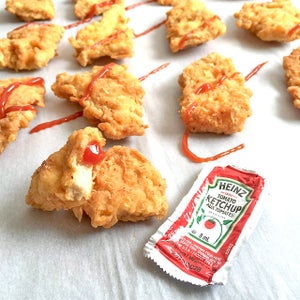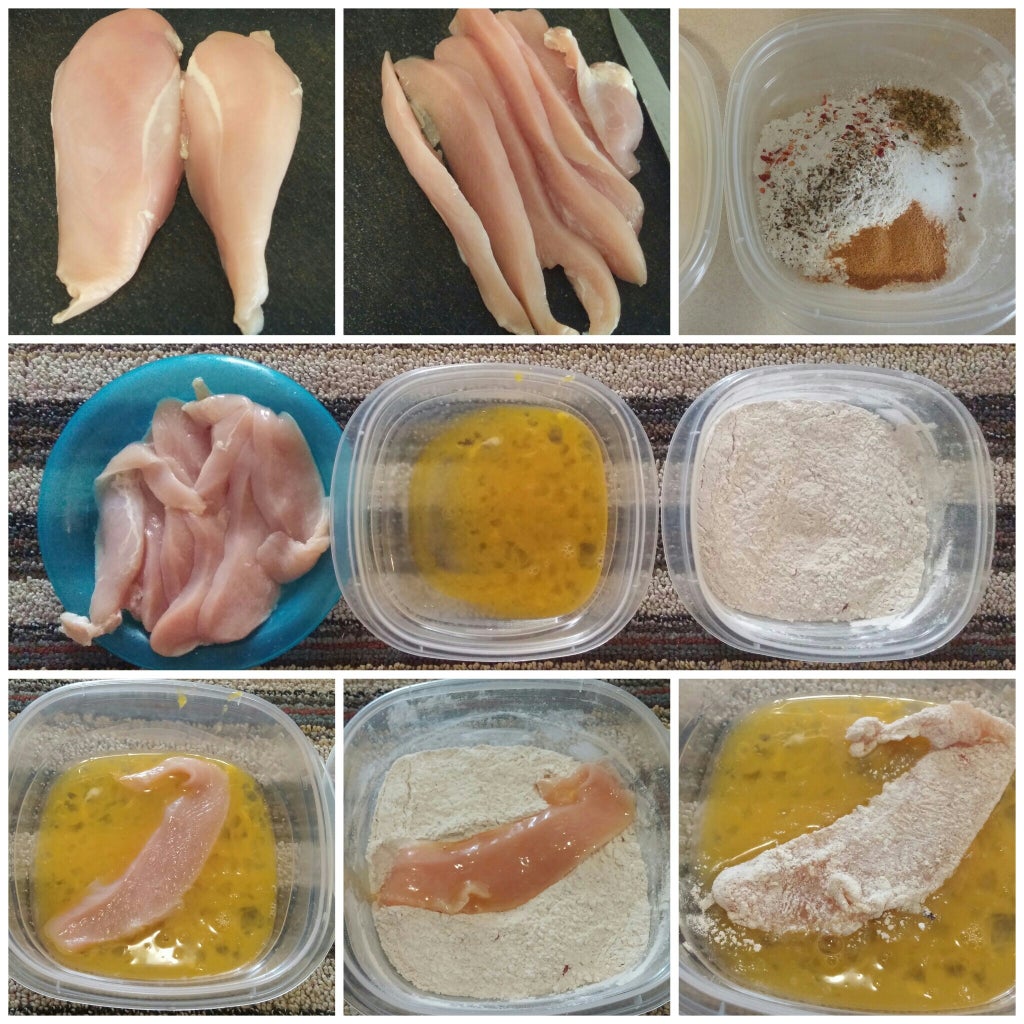Fried chicken is an iconic dish beloved around the world. When done right, it hits the perfect trifecta of flavors and textures – ultra-crispy, golden brown crust enveloping tender, juicy meat. But frying chicken isn’t as simple as just dunking pieces into hot oil. There are nuances and techniques to truly mastering the art of fried chicken.
In this guide, we’ll dive into the three most popular methods for frying chicken – deep frying, pan/shallow frying, and air frying. We’ll explore how each method works, tips and tricks to nail it perfectly every time, and the pros and cons of each technique. Let’s get crisping!
An Overview of the Three Frying Methods
Deep Frying – This technique fully submerges chicken pieces into hot oil using a deep fryer or large pot It’s the classic method that produces incredibly crispy chicken with juicy meat when done properly.
Pan/Shallow Frying – Chicken is fried in a skillet with just enough oil to come halfway up the chicken pieces This method uses less oil than deep frying but requires more attention to flip and monitor pieces
Air Frying – Modern air fryers use super hot air circulation to crisp up chicken using little to no oil. An oil spray helps promote browning. It yields healthier chicken than traditional frying.
Each method has its own nuances to achieve the perfect crispiness and moisture balance. Let’s explore them in more detail.
Deep Frying – The Classic Route to Perfection
Deep frying remains the gold standard technique for flawless fried chicken. By fully submerging chicken in hot oil, the heat rapidly crisps up the exterior while locking in plenty of juicy moisture. Here are some tips for deep fry success:
-
Use the right oil – Choose a high smoke point neutral oil like peanut or canola. Avoid olive oil or butter which can burn.
-
Perfect the temperature – Ideal oil temp is 325-350°F. Too low and chicken gets greasy, too high and outside burns. Use a thermometer.
-
Work in small batches – Don’t overcrowd the fryer, which drops oil temp. Fry in manageable batches for ideal crispness.
-
Follow a breading workflow – Dry chicken, dip in buttermilk or eggs, coat in seasoned flour or batter, back to buttermilk, then re-coat in flour.
-
Fry until golden brown – Once battered chicken is dropped in oil, fry for 6-8 minutes per side until golden brown.
-
Check internal temp – Breasts should reach 165°F internally, legs 175°F. Use a meat thermometer for safety.
-
Drain on a wire rack – Letting chicken drain on a rack prevents sogginess from trapped oil.
The meticulous steps are worth it – deep frying yields the crunchiest, juiciest fried chicken that’s hard to beat. But it does require more oil and attention than other methods.
Pan/Shallow Frying for Crisp Chicken with Less Oil
For those who want to cut back on the amount of oil, pan frying chicken is a great alternative. With the right techniques, you can still achieve beautifully crispy chicken:
-
Use a heavy pan – Cast iron or heavy stainless steel allows even heat distribution for optimal frying.
-
Don’t crowd the pan – Cook chicken in a single layer with space between pieces.
-
Flip frequently – Pan frying requires diligent flipping every few minutes for even cooking.
-
Watch oil levels – Add more oil as needed to maintain 1/2 inch depth throughout cooking.
-
Aim for 325-350°F oil – Use a thermometer or test oil temp by adding a small piece of breading. Proper sizzle = good temp.
-
Check internal temp – Breasts to 165°F, legs to 175°F ensures safe doneness.
-
Drain on a rack – Letting chicken drain on a wire rack keeps it crispy after cooking.
With a little more attention and care, pan frying lets you achieve crispy, flavorful chicken with less oil than deep frying.
Air Frying – A Healthier, Oil-Free Option
Air fryers have surged in popularity for their ability to yield delicious crispy chicken using little to no oil. Here’s how to effectively air fry:
-
Spray chicken with oil – A light coating of oil helps promote browning and crisping.
-
Use a breading – The porous surface of a flour/breading mixture crisps up best.
-
Don’t overcrowd – Just like traditional frying, air frying works best in batches.
-
Flip halfway – Rotate and flip chicken at the halfway mark for even cooking.
-
375°F for 15-20 minutes – The high heat of an air fryer means chicken cooks faster than other methods.
-
Check internal temp – Breasts to 165°F, legs to 175°F to ensure doneness.
While air fried chicken may not be quite as deeply crispy as oil fried, its significant reduction in fat and calories makes it an enticing option for healthier eating.
Comparing the Fried Chicken Methods
To summarize the key differences:
| Method | Oil Usage | Crispness | Cooking Time | Attention Needed | Health Factor |
|---|---|---|---|---|---|
| Deep Frying | High | Highest | Medium | Medium | Lowest |
| Pan/Shallow Frying | Medium | High | Medium | High | Medium |
| Air Frying | Low | Medium | Fast | Medium | Highest |
Tips for Perfectly Fried Chicken Every Time
Beyond choosing a frying method, there are some universal tips that will ensure the best fried chicken regardless of your technique:
-
Start with high-quality chicken – Better quality bird = better end result. Go for fresh whenever possible.
-
Buttermilk soak – Buttermilk tenderizes chicken and imparts delicious tangy flavor. Soak 30 minutes or up to overnight.
-
Dry chicken thoroughly – Remove excess moisture for ideal breading adhesion. Pat dry with paper towels.
-
Season flour generously – Incorporate flavors like garlic powder, paprika, cayenne, pepper, and salt into your dredging flour.
-
Rest breaded chicken – Let sit for 5-10 minutes so coating adheres before frying.
-
Fry at proper temp – Invest in a thermometer and fry between 325-375°F depending on oil amount.
-
Don’t rush the process – Have patience. Perfect fried chicken takes time, care, and attention.
-
Let chicken rest before eating – Allow 5 minutes for juices to settle for ideal flavor and texture.
FAQs About Frying Chicken
What’s the best oil to use for frying chicken?
For deep frying, peanut, canola, vegetable, and cottonseed oils work well. For pan/shallow frying, try peanut, vegetable, avocado, or olive oil. Always avoid oils with low smoke points.
How do I know when my fried chicken is fully cooked?
Check the internal temperature using a meat thermometer. Chicken breasts should reach 165°F and legs 175°F. If juices run clear when pierced, it’s a sign of doneness.
Is pan or deep frying chicken healthier?
Deep frying packs in more calories from larger oil amounts. Pan frying uses less oil, so it’s relatively healthier. For lowest calories, air frying is the best bet.
What can I do if my fried chicken is greasy or soggy?
This usually happens when oil temperature is too low. Use a thermometer to maintain 325-375°F oil temp. Don’t overcrowd the pan/fryer. Drain chicken on a wire rack, not paper towels.
How do I get my fried chicken extra crispy?
Double dredging in seasoned flour helps build crunchy breading layers. Add cornstarch or baking powder to flour for extra crispness. Maintain proper oil temp throughout cooking.
The Takeaway on Frying Chicken
Whether your goal is ultra-crispy deep fried chicken or a healthier air fried version, understanding the core techniques of each method is key to executing it flawlessly. With the right temperatures, flip frequencies, batch sizes, and oil types accounted for, you’ll be an unstoppable fried chicken expert. Just don’t forget the coleslaw, biscuits, and pickles on the side!

Introduction: Perfect Fried Chicken

Step 1: Battered Chicken

1. Wash the chicken breast and pat dry them. Cut into strips (1/4 inch)
2. Combine all dry ingredients in a bowl and set aside.
3. Crack an egg in a bowl, season with a pinch of salt, whisk for 30 sec and keep it aside.
4. Keep everything ready now! ( chicken strips, beaten egg mixture, flour mixture )
Take a chicken strip, dip it in egg mixture, then dredge it in the flour mixture and then dip it in the egg mixture again and coat it well in the flour mixture. Keep the battered strip in a plate. Now repeat the same for rest of the strips.
